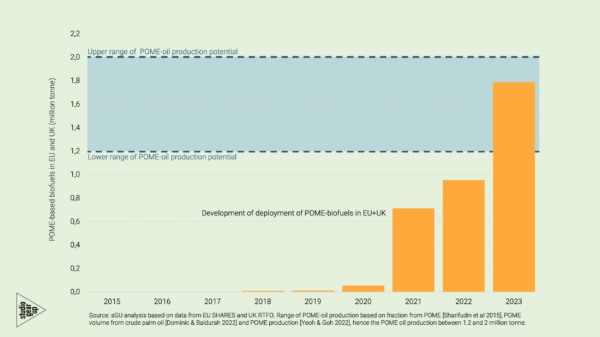For: Dutch Ministry of Infrastructure and Water Management, Department of Aviation
[September – December 2022]
July 2021 the European Commission presented a proposal for a regulation that would set mandatory targets for the deployment of renewable fuels in the European transport sector, known as ‘ReFuelEU Aviation’. Aimed to be implemented as of 2025, the regulation will determine that sustainable aviation fuels (SAF) are blended with conventional kerosene for all flights departing from EU airports. Blending percentages will increase on 5-year intervals, starting from 2025, up to 2050. In 2030 at least 5% of all supplied fuel shall be SAF, of which at least 0.7% renewable kerosene of non-biological origin (e-SAF). This regulation aims to stimulate innovation towards sustainable energy and build trust for investors and market parties to scale up (e-)SAF production.
The ‘Luchtvaartnota, published in 2020, even before the ReFuelEU Aviation proposal was announced, formulated higher ambitions for the Dutch aviation sector: a share of 14% SAF in 2030. Together with the multiplier factor for deployment in aviation, introduced in the 2018 Renewable Energy Directive, this is a supportive instrument for the production and deployment of SAF.
As a result one can now see various announcements of new SAF production facilities, that will be built in the Netherlands as well as elsewhere in and outside Europe.
The refining of SAF requires significant volumes of hydrogen. Also the production of e-SAF required renewable hydrogen, produced from renewable electricity (via electrolysis) and CO2-sources. The refining of bio-based feedstocks to SAF also requires hydrogen, which currently mainly still concerns fossil based hydrogen. In the future this needs to shift to renewable hydrogen as well.
Next to the shift to renewable fuels, developments in aircraft design take place as well. Technology development will bring direct-hydrogen use in fuel cell airplanes to market level in the coming decades. This will increase the demand for renewable hydrogen even further.
In this context The Netherlands Ministry of Infrastructure and Water Management has asked studio Gear Up to sketch the potential future demand (2030, 2050) for hydrogen, both for direct and indirect use (in fuels) for the Dutch aviation sector.
The Minister for Infrastructure and Water Management, Mark Harbers, has sent a letter on the report to the Netherlands Parliament. The letter (in Dutch) with annexes can be downloaded from the website of the Ministry.
Download rapport
More details on the content of the report can be found on this page.
The report (in Dutch) can also be downloaded here.



